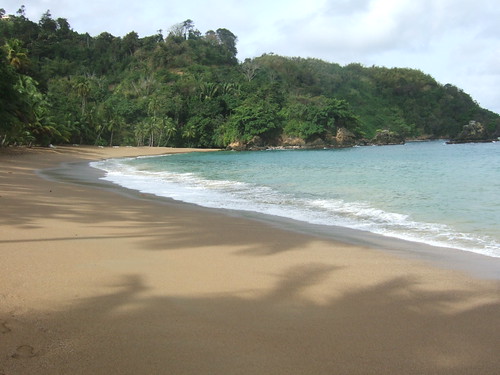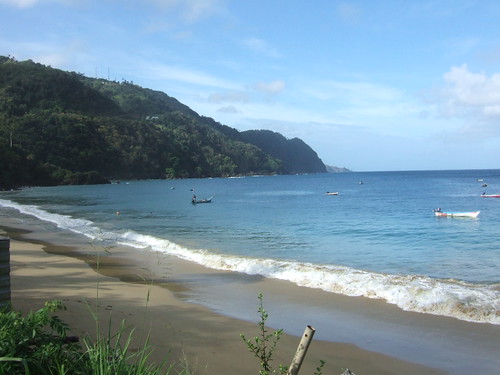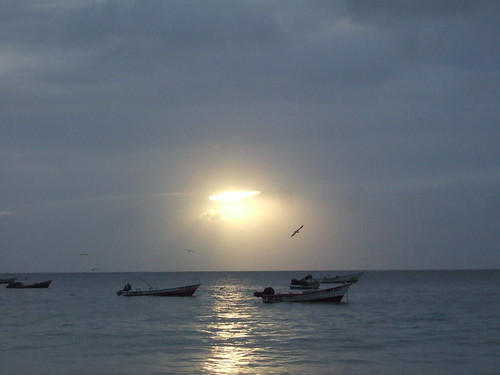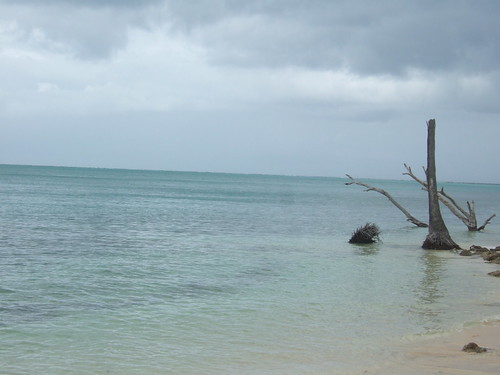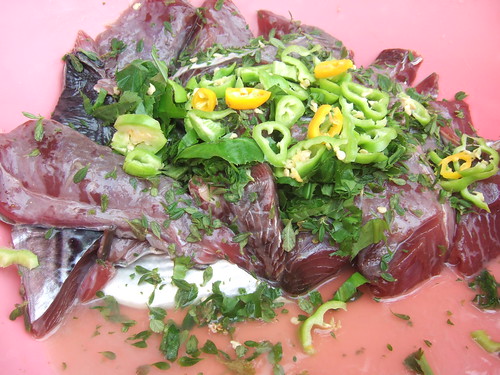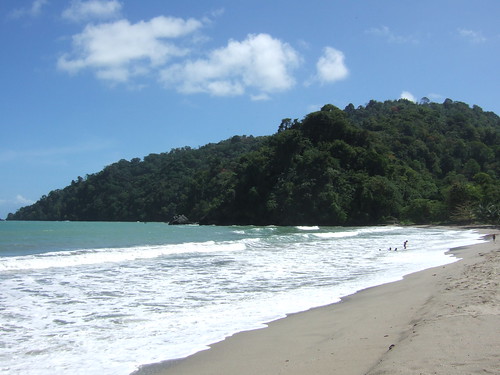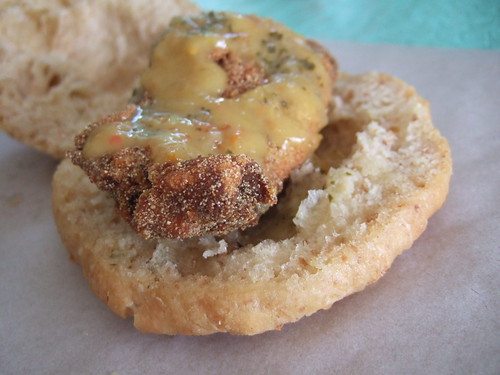Our stomachs full of roti, we continued the drive on Windward Road to Roxborough. We saw the sign for Argyle Falls and decided to stop and walk off our heavy lunch. From the parking lot, we told the rangers that we didn’t need a guide so they just let us walk to the falls ourselves. It was only a 15-minute walk on the well-paved trek. Cocoa and bamboo trees lined the side of the road. In the river, fish swam hungrily near our feet expecting us to throw them some food.
The falls is the highest in all of Tobago at 177 feet with three main cascades. We were eager to move when we paid our entrance fee but not so eager to walk up the steep steps next to the falls to get a better view. We just hanged out and watch a couple take a dip in the pool.
After Argyle Falls, the need for an afternoon nap set in. We stopped in downtown Scarborough to get gas and buy some fruits and vegetables for dinner. Inside the Penny Savers supermarket, the vegetables were as scarce as in Castara Bay. Luckily, we caught a glimpse of a vegetable market stand outside the parking lot. It was a small store full of vegetables and fruits that were local to the area. We happily stocked up on tomatoes and cucumbers, as well as a big chunk of watermelon.
We continued on the airport road determined to end our day at our last beach stop in Tobago. Pigeon Point Road is where the Atlantic Ocean meets the Caribbean Sea. The sand was definitely more Caribbean than anything we’ve seen in the country: powdery and almost white. In fact, Tobago’s best beach is Pigeon Point and they keep it that way by charging an entrance fee. Past the checkpoint, we parked out car and joined the revelers at the bar; there were no locals in sight except for the uniformed staff members and security guards patrolling the area.
After a couple of beers and rum punch, we sat on the beach to while away the rest of our afternoon. I went in the water a few times to cool off while jet skiers, parasailers and windsurfers made noise in the background. The Dr. remained reading under a tree to avoid getting more burned.
On our way out the gate, we noticed a couple of fishermen bringing in the day’s catch from a boat. Intrigued, as we haven’t really seen a lot of fishermen at work on Castara, we stepped out of the car to inquire if we could buy some of the flying fish in their basket. We imagined a civilized fish dinner with nice big salad for the night. The men were just waiting for a truck to pick up their haul. They told us that the fish will eventually end up in Europe’s supermarkets. We bought six for TT$1 apiece and started off back to our car until one of the boys from the jet ski rental shop stopped us. He ended up inviting us to stay and join the rest of his crew for dinner. They were already preparing to grill theirs when we joined them with a few bottles of cold beer bought from the store down the street.
We watched the sun go down and exchanged stories with the locals while we waited for our fish to cook. We told them about living in New York and they told us about growing up in Trinidad and living in Tobago. A few more men joined us by adding more fish on the grill. Using big leaves plucked from the trees as plates and our hands as utensils, we dove in and ate our grilled fish just like the rest of them.
Back in Castara Bay, I put together our tomato and cucumber salad with the little we had in our makeshift kitchen. We ate our second course out in the patio and drank some more beers before retiring for the night. We were grateful for the invitation from the jet skiers and glad that we made new friends during our last night on the island. It just seemed like the perfect experience to end our stay in Tobago.
Related post/s:
Day 6 in Tobago: Argyle Waterfalls photos on Flickr
Day 6 in Tobago: Pigeon Point photos on Flickr
We began Day 6 driving a rental car around Tobago





